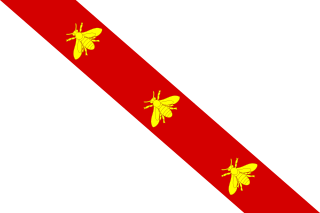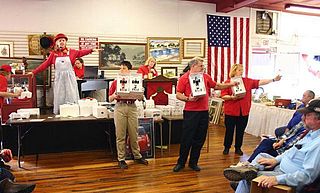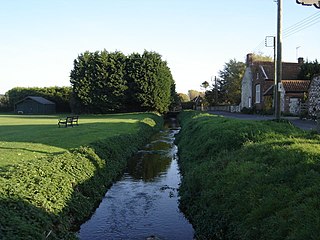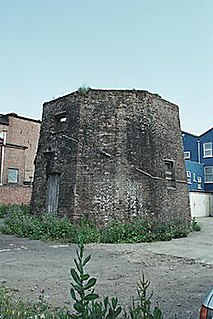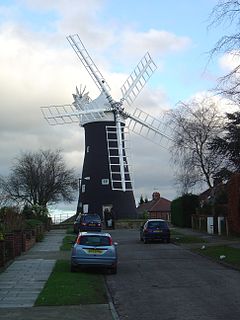| Burnham Overy Mills | |
|---|---|
 | |
| Origin | |
| Mill name | Union Mills |
| Mill location | TF 8423 4260 |
| Coordinates | 52°57′35″N0°44′05″E / 52.95972°N 0.73472°E Coordinates: 52°57′35″N0°44′05″E / 52.95972°N 0.73472°E |
| Operator(s) | Private |
| Year built | 1737 |
| Information | |
| Purpose | Corn mill |
| Type | Tower mill |
| Storeys | Six storeys |
| No. of sails | Four sails |
| Type of sails | Double Patent sails |
| Windshaft | cast iron |
| Winding | Fantail |
| Auxiliary power | Waterwheel, also a steam engine which was later replaced by a gas engine and then an oil engine |
| No. of pairs of millstones | Two pairs, plus three pairs in the watermill |
| Size of millstones | Two pairs 3 feet (910 mm) diameter, three pairs 4 feet (1.22 m) diameter |
Union Mills or Roy's Mills are a Grade II listed [1] combined tower mill and watermill at Burnham Overy, Norfolk, England which has been converted to residential accommodation.

A listed building, or listed structure, is one that has been placed on one of the four statutory lists maintained by Historic England in England, Historic Environment Scotland in Scotland, Cadw in Wales, and the Northern Ireland Environment Agency in Northern Ireland.

A tower mill is a type of vertical windmill consisting of a brick or stone tower, on which sits a wooden 'cap' or roof, which can rotate to bring the sails into the wind.

A watermill or water mill is a mill that uses hydropower. It is a structure that uses a water wheel or water turbine to drive a mechanical process such as milling (grinding), rolling, or hammering. Such processes are needed in the production of many material goods, including flour, lumber, paper, textiles, and many metal products. These watermills may comprise gristmills, sawmills, paper mills, textile mills, hammermills, trip hammering mills, rolling mills, wire drawing mills.

